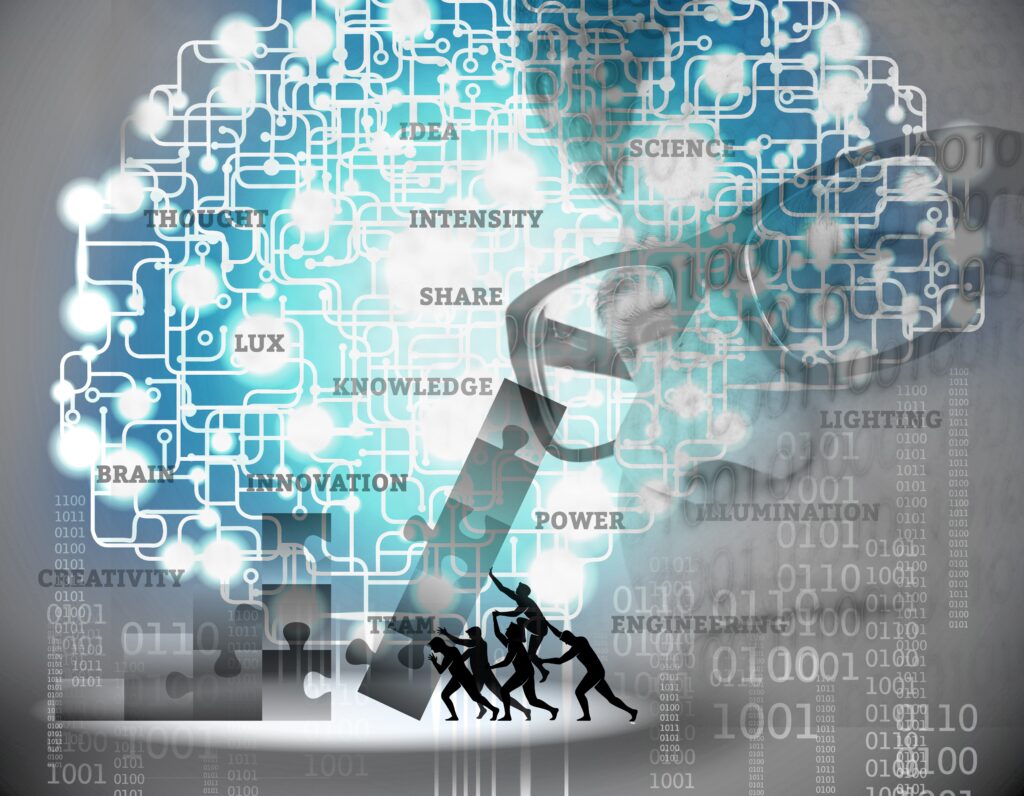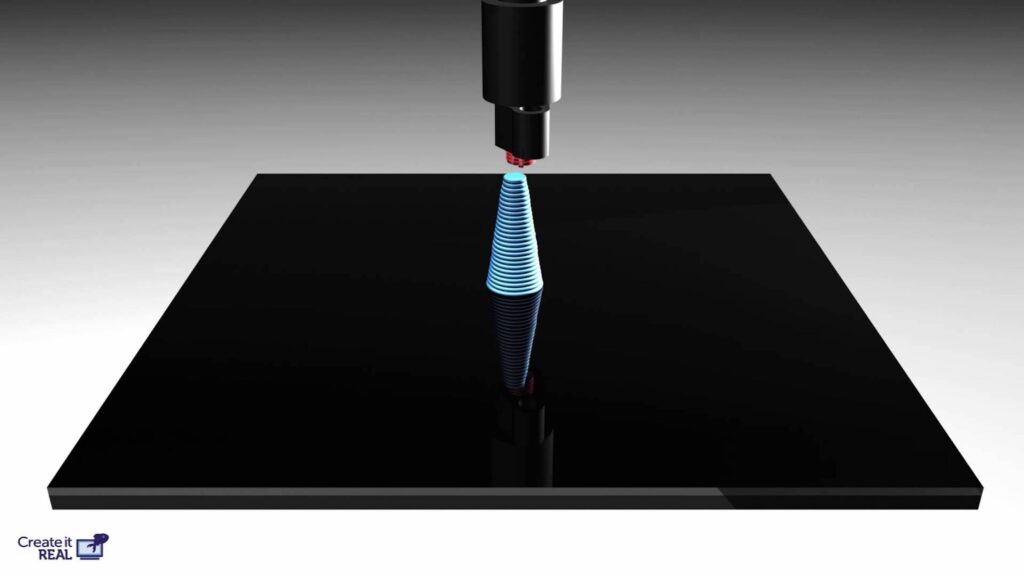The time out to which last Spring compelled us was for many companies the opportunity of meditating their structure and their manufacturing models. To restart means not only to recover manufacturing and to restore the turnover at pre-crisis levels but also and especially to review one’s own business strategies in the light of what happened, trying to implement in the “new normal” what can make companies more resilient and competitive
We have learnt many lessons in this 2020. Digitalization, for instance, is a competitive edge; the smart working leads also to more productivity; it may be extended to the factory in the Industrial Smart working form; some technologies can play a fundamental role in making the company more autonomous. They are important acknowledgements because they will certainly influence the industry’s development in the next future.
 Digitalization: queen of resilience, restart instrument
Digitalization: queen of resilience, restart instrument
Undisputed queen of resilience during the crisis was digitalization. In a workshop organized by the Competence Center MADE of Milan, Carla Masperi, Chief Operating Officer of SAP Italia states: «The exogenous shock that affected us undoubtedly highlighted the importance of digital processes. Digitalization has allowed many companies to assure a certain business continuity, of which the possibility of working at home – what we commonly call smart working – was just one of the aspects». Digitalization proved to be a powerful ally that has permitted, within certain limits, to implement also the production in smart working. As states Giuliano Busetto, Head of Digital Industries, Siemens Italia: «It is obvious that the manufacturing aspect needs “to have a finger in the pie”, but the past period revealed the number of processes that can be carried out successfully from remote to many companies: plant testing, machine management from cloud, maintenance in real time. Today we can fully simulate a machine from remote, its mechanics and its integration into a manufacturing line; by means of adequate collaborative software, we can accomplish projects with teams who work from remote; with the augmented reality we can operate in distant places as if we were on the spot. These possibilities are based on digital technologies that have existed for a long time but their adoption has been very slow until now». The reasons for this slowness are various but they certainly include the missing full understanding of the advantages of this innovation direction. Nowadays, in a post crisis era and on balance, this awareness is much stronger: the difference between mere survivors and those who succeeded in facing the crisis more smartly resides also in the digitalization level previously deployed by companies. Therefore, the crisis leaves us a clear heritage we cannot ignore today: digitizing is not an option but a need. Not only because it would make us more resilient in an eventual new crisis, but also because from the point of view of “new normal”, it increases companies’ competitiveness. Masperi affirms: «In the manufacturing world, digitalization and inherent technologies – IoT, Artificial Intelligence, Robotics, Cloud and big data analysis, sensors etc. – will be the trump card because they facilitate the management, they increase flexibility and efficiency and result in sustainability. Today they all are fundamental themes that no entrepreneur can set aside because they represent competitiveness factors and because the world pursues this direction». The attention to these technologies will be vital for all but to a greater extent for SME that, if they do not undertake this course, will suffer from an ever-increasing gap between them and big industries.
 The smart working leads also to productivity increase
The smart working leads also to productivity increase
One of the possibilities enabled by digitalization, whose advantages have been seen from close up by many, is the smart working. During last months, it has allowed the business continuity to many companies, with both their collaborators and in the relationships with customers. All, even those who had never considered it before, recognize the benefits of this working modality. Frascold, one of the companies in the refrigeration sector we interviewed last months, states concerning this: «We have to admit we are extremely surprised by the efficiency that has characterized and characterizes the smart working operation: our collaborators succeed in managing very well their daily routines and face their work with much serenity. This is visible in the efficacy of results, too. We do not exclude the possibility of considering this formula in the future, too. Moreover, in the light of this experience, we will assess the possible employment of people who live far from our headquarters, if they have the required skills: enabling the smart working, we also widen our talent recruitment audience».
The smart working is much more than remote working by definition. It is a new managerial approach based on providing collaborators with flexibility and autonomy in the choice of spaces, working hours and instruments to be used in their job, against higher assumption of responsibility in the achievement of the entrusted results. The real smart working implies a change of mentality because it tries to develop the activity by targets and decreases the importance of standard elements like timetable or working place, focusing instead on higher empowerment for results. In all this, the digital technology plays a key role: it enables, it supports and it allows sharing and controlling.
According to many companies’ statements, the smart working will be one of the heritages left by this crisis. Many of them, in fact, are willing to adopt it because it means optimization of costs and of results. Obviously, this does not mean that workplaces will disappear but, certainly, the “new normal” will imply a more intense use of smart working meant as a mix of face-to-face work and of working from remote. This will involve necessary changes for companies: a redesign of the layout of their own physical space and organization; a strengthening of their own digital technologies to enable the work in other places outside the company; the need of establishing an after sale service to assure that this “diffused” office constantly operates; a review of the workplace concept, no longer connected with a specific person but with specific activities and working requirements, with spaces revised to make the collaboration and the use of resources made available by companies more efficacious.
 From smart working to Industrial smart working
From smart working to Industrial smart working
As previously said, there are technologies that enable the smart working in the factory, too. As explains Davide De Cesaris, pre-sales manager South Europe in PTC, partner company of the Competence Center MADE: «When we speak of Industrial Smart Working we necessarily refer to industry 4.0 technologies that mainly start from the IoT – lnternet of Things. It allows the man-machine interaction from remote and then, through the analysis of the data collected by machines themselves and transmitted to the cloud, the control from remote and in real time of some manufacturing processes that autonomously take place in the factory. All that travels inside the factory through determinate machines becomes usable in collaborative modality and from remote». Clearly, it is necessary the factory is equipped with enabling technologies, enabled to a man-machine interaction, but such technologies – cobots, industrial robots and machine learning, just to mention some of them – more and more become part of the modern factory. Once adopted these technologies and the digital eco-system to manage them, the remote execution of some operations becomes possible: the manufacturing process inside the factory is made visible from remote and it is accompanied for instance by the possibility of forecasting failures or product quality deteriorations. «We should not think that SME can hardly enjoy such technologies. Today they are offered in platforms that allow a gradual digitalization of the company, to be able to implement in very usable modality the exploitation of technologies in the specific context of each company. Such technologies are extremely affordable for all companies, SME included, in terms of both costs and demanded competences. Moreover, many of these companies have not knowledge prerequisites. In our experience, in endless cases it was possible to introduce these technologies almost in the lapse of 24 hours without any requisite. It is worth underlining that the economic returns generated by such technologies are not additive but incremental and, according to our experience, very important». The scope of the industrial Smart Working, meant as the implementation of part of manufacturing processes from remote, might have a not negligible scope, if we consider that about 75% of the working population is engaged in productive or logistic processes, in other words in processes that, unlike the ambit of employees or of teams working in offices, are not so linked with the smart working concept, yet. However, the crisis we lived has taught that in many cases the possibility of managing even part of productive processes from remote would have certainly allowed a smarter factory management even in so difficult times. For this reason, the Industrial Smart Working is likely to be one of the trends gradually undertaken by the manufacturing industry. «With these systems, for instance, the department head does not need to keep in touch with his team constantly but he can comfortably control the factory from remote». A new wind blows on manufacturing production, too.
From the Activity Management to the Result Management
If what we face is a modification in the management and organization of work and factory, then it will be necessary to establish also a new managerial model that, much more than today, will have to work on the capability of delegation, on the autonomy and empowerment of workers because the latter will be expected to work according to entrusted targets and be autonomous in defining the activities to be undertaken to reach such goals. Roberto Villa, Manager of Research Ecosystem of IBM Italia and member of the technical-scientific committee of Made, affirms: «We must shift from a leadership in Activity Manager style to one in Result Manager style. In the first, we apply a culture of control on single activities whereas in the second model we must apply much more delegation. The manager becomes the coach of his collaborator and must help him in reaching the assigned targets. The leadership must operate much more according to a vision of entrusted goals, delegation, autonomy and empowerment of collaborators. We work on the project and consequent result, less on the single activity».
New technologies, new resilience forms
One of the elements that often proved to be a weak link for the company’s business continuity were provisioning chains. Concerning this, Carel states: «The pandemic has highlighted some weak points that reside in the supply chain: electronic controls, which are our core business, consist of endless parts, which are generally bought on local basis. However, when a whole Country is locked down, as it happened with this pandemic, the supply of components for our production becomes the main problem. In fact, while our manufacturing capacity in its whole would have been able to cope with the emergency, despite some lockdowns, the upstream supply chain has imposed us some limitations».
Situations as above described, where the supply chain constituted the bottleneck for the production, need a “reshoring” or remodelling of provisioning chains. In this context, we must mandatorily refer to a rising technology such as additive manufacturing, i.e. the possibility of producing spare parts autonomously when they cannot be physically ordered. Such technology, still scarcely diffused among manufacturing companies, just in crisis time demonstrated its potentiality as solution to contingent requirements of production of hardly provisioned components. In Spring, the European Commission itself urged additive manufacturing companies to a cooperation, to make urgent and hardly found medical components available.
Collaborative robotics is currently proving to be a powerful ally in factories, too, wherever it is necessary to maintain safety distances among workers. Introducing in fact a cobot (collaborative robot) between two human operators and entrusting it with a set of tasks and activities, we would not stop the productive chain, meanwhile conforming to distances among human workers. Collaborative robotics as well – like additive manufacturing –is an emerging technology and specifically addresses SME due to its user friendliness in commissioning, programming and re-programming, the low cost compared to standard robotics and the possibility of integrating cobots on various manufacturing lines, according to the company’s contingent needs.
A movie director needed!
The presented reflections describe just some of the trends that, according to the teachings given by the health crisis, will probably characterize a transformation of companies in the next future. However, it is worth stressing the need of a general direction that assures a regulatory framework in which this transformation towards a higher resilience can take place with serenity for companies themselves. It is necessary to grant that development plans like Industry 4.0 are confirmed on a time horizon lasting more than one year; it is necessary to grant that the promised aids effectively reach also companies and the latter do not feel abandoned while they are dealing with the restart, as on the contrary some affirm they feel; finally, it is necessary to create infrastructures urgently so that digitalization occurs more quickly and not only in metropolitan areas but in the whole Country. These are only some of companies’ requirements so that they can really implement the precious lessons given during the health emergency.




